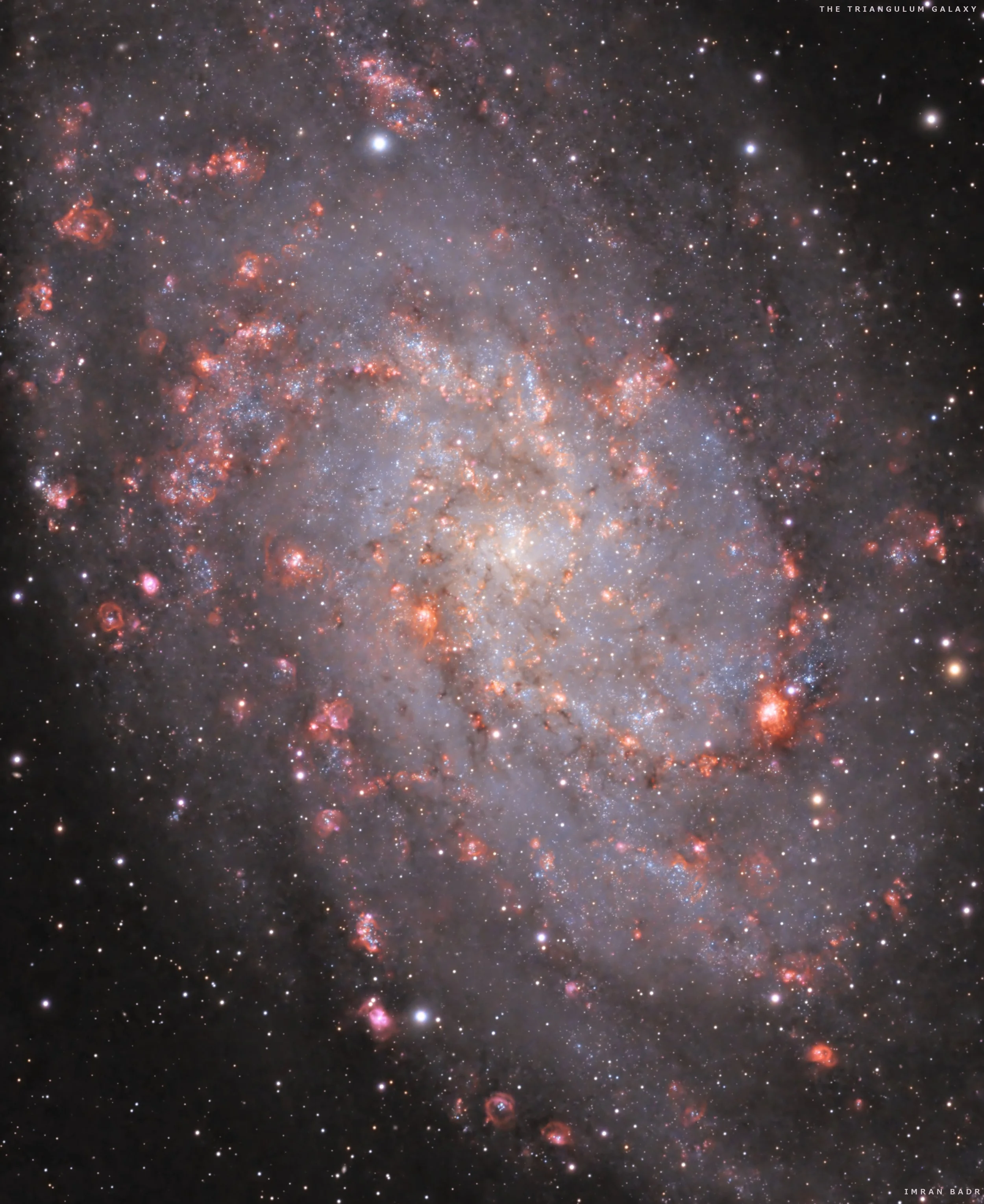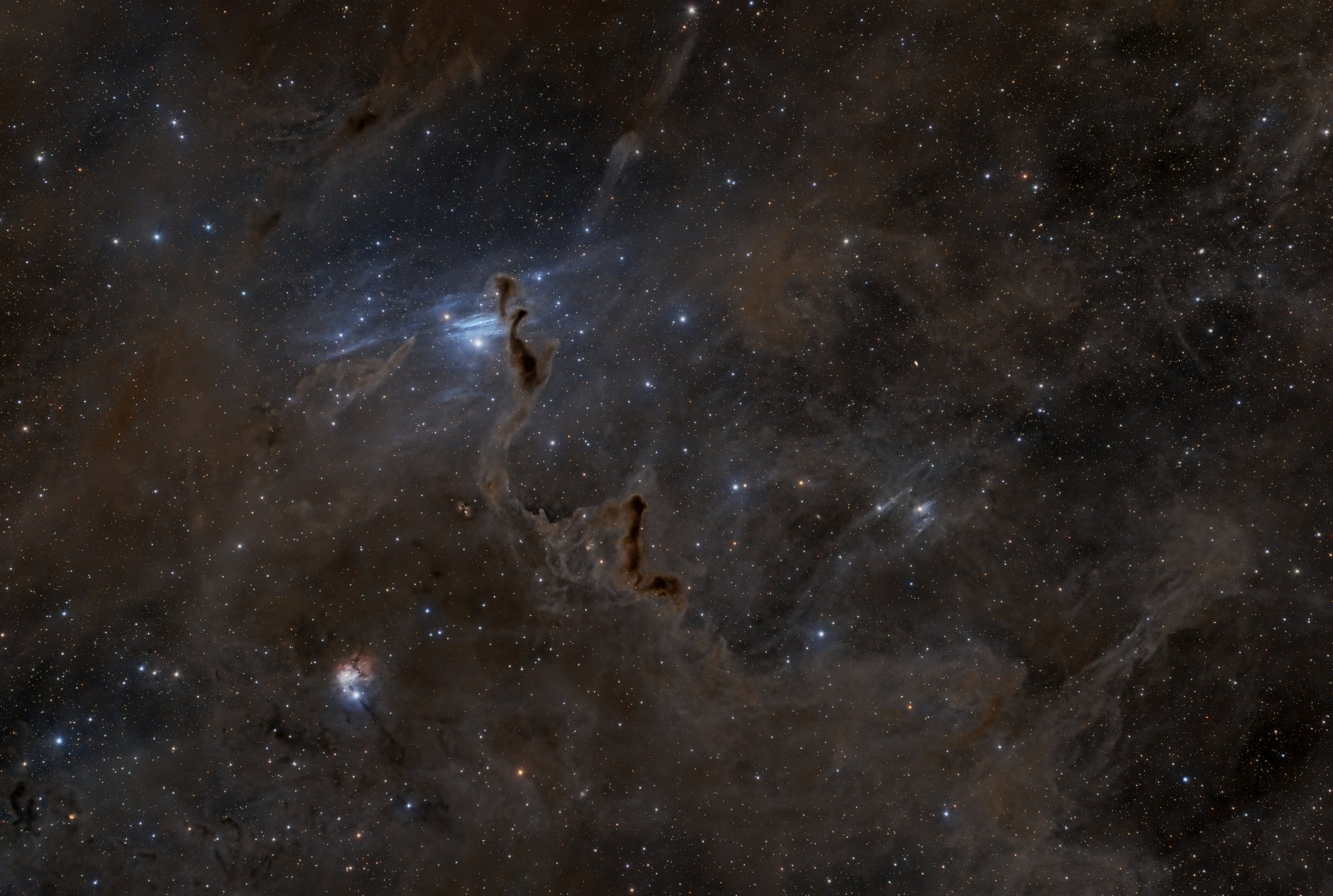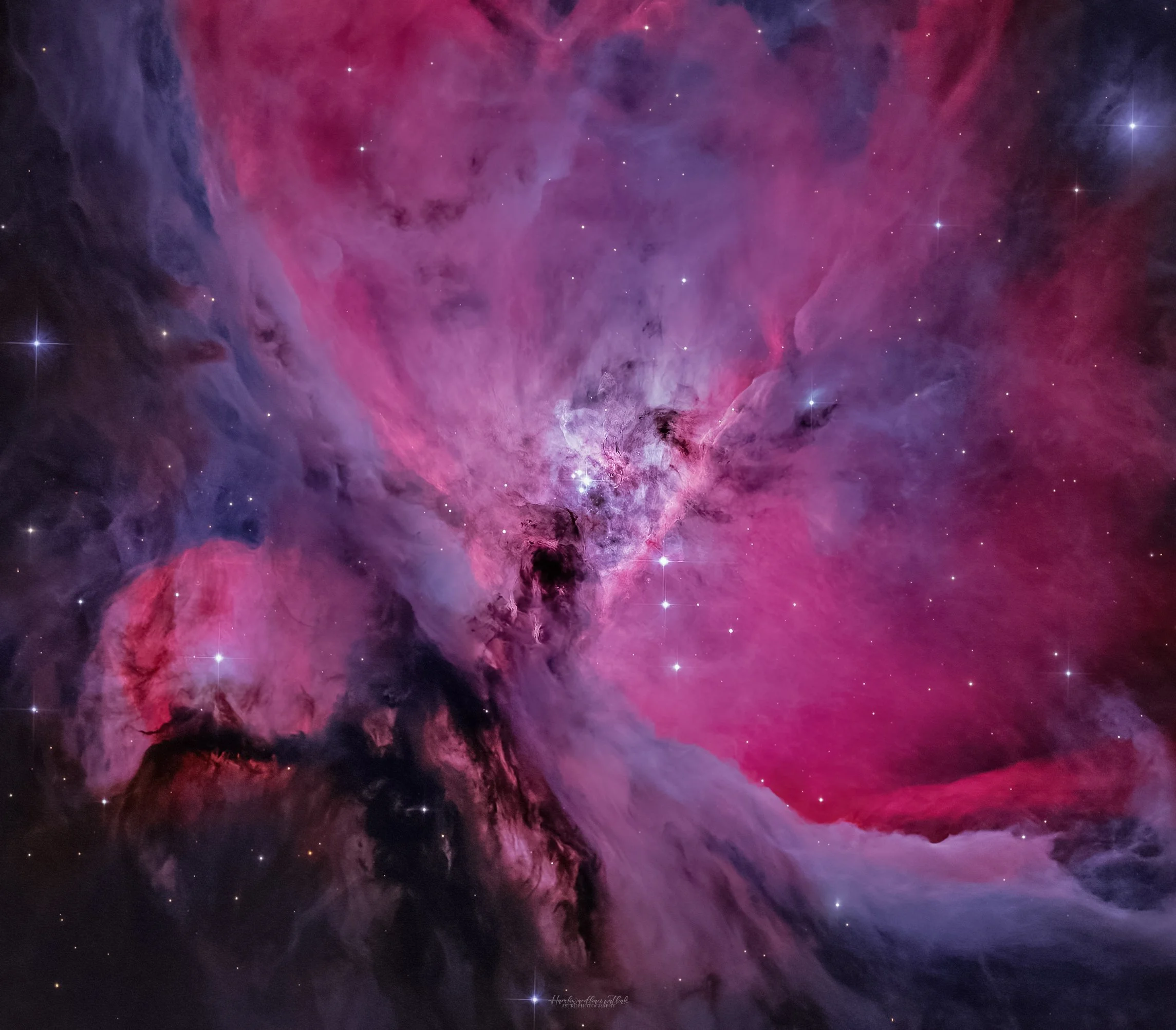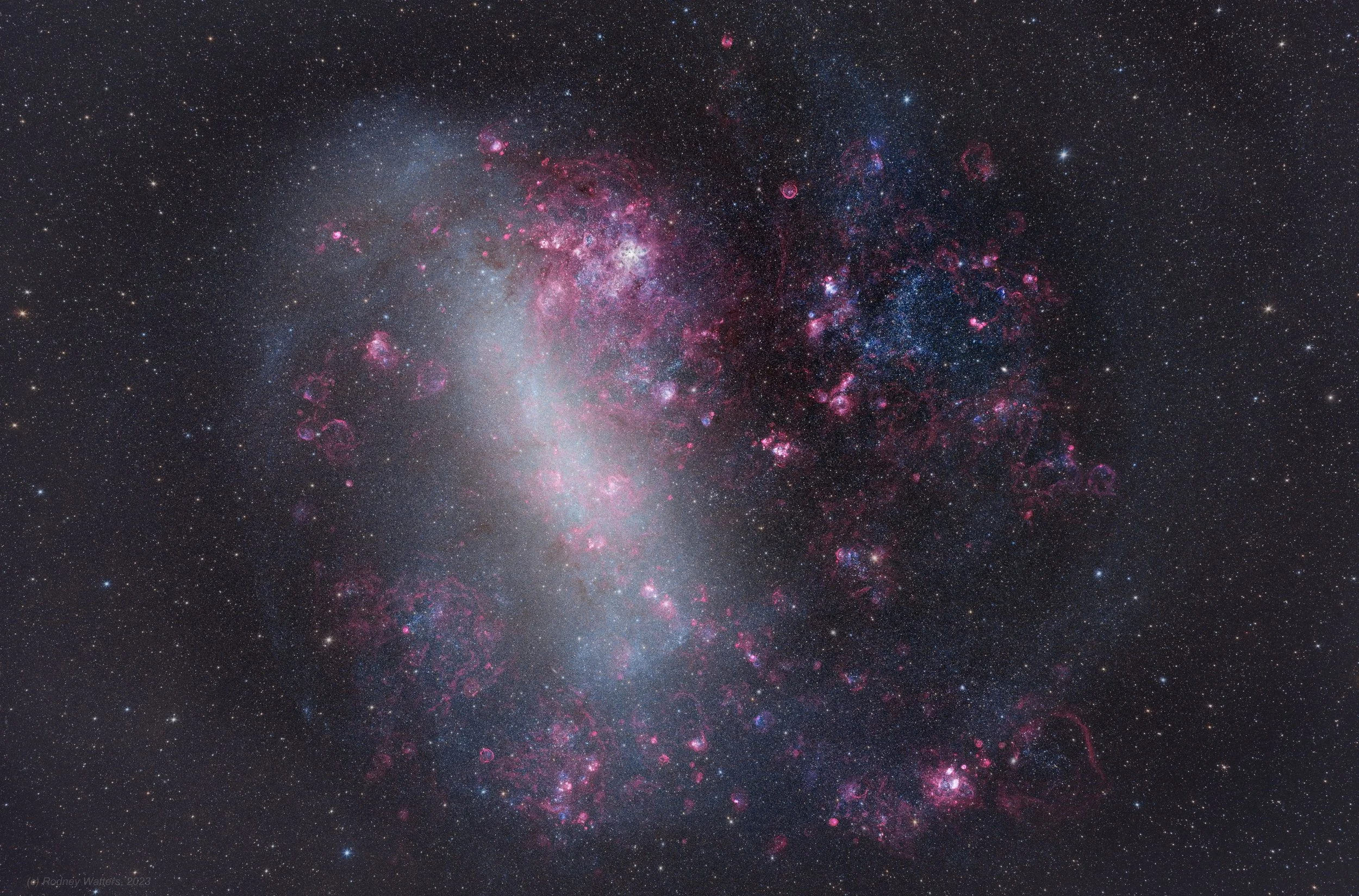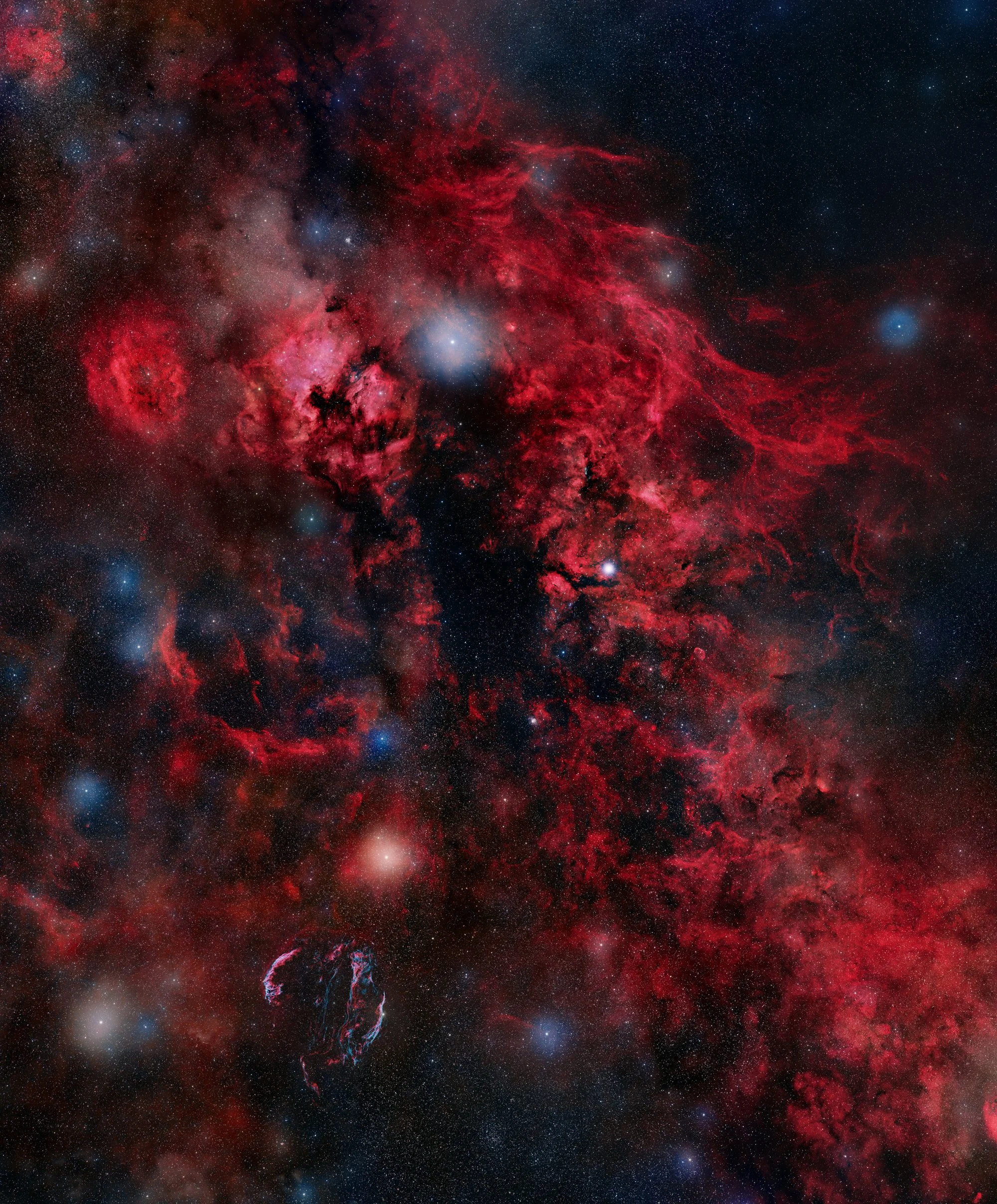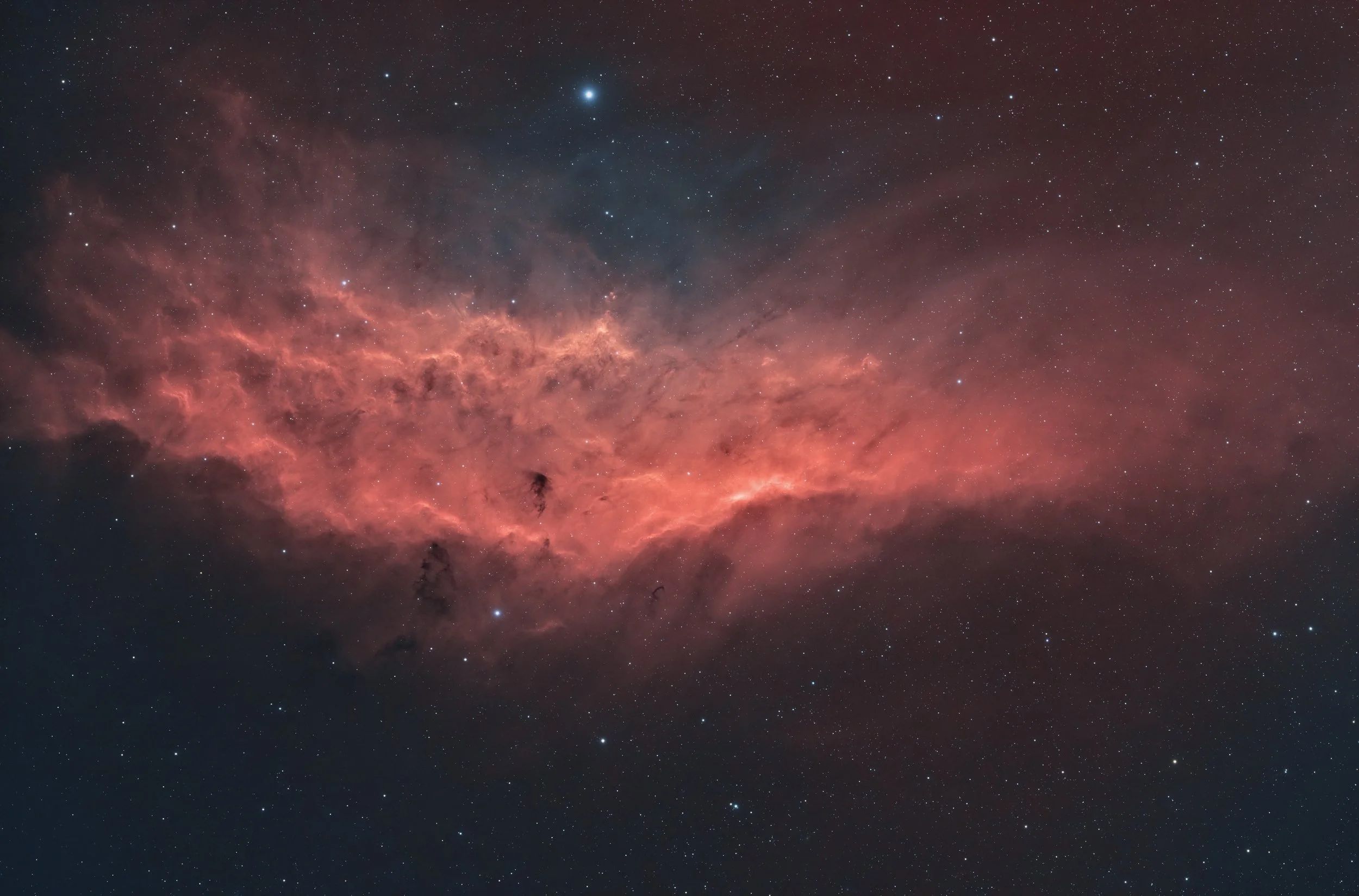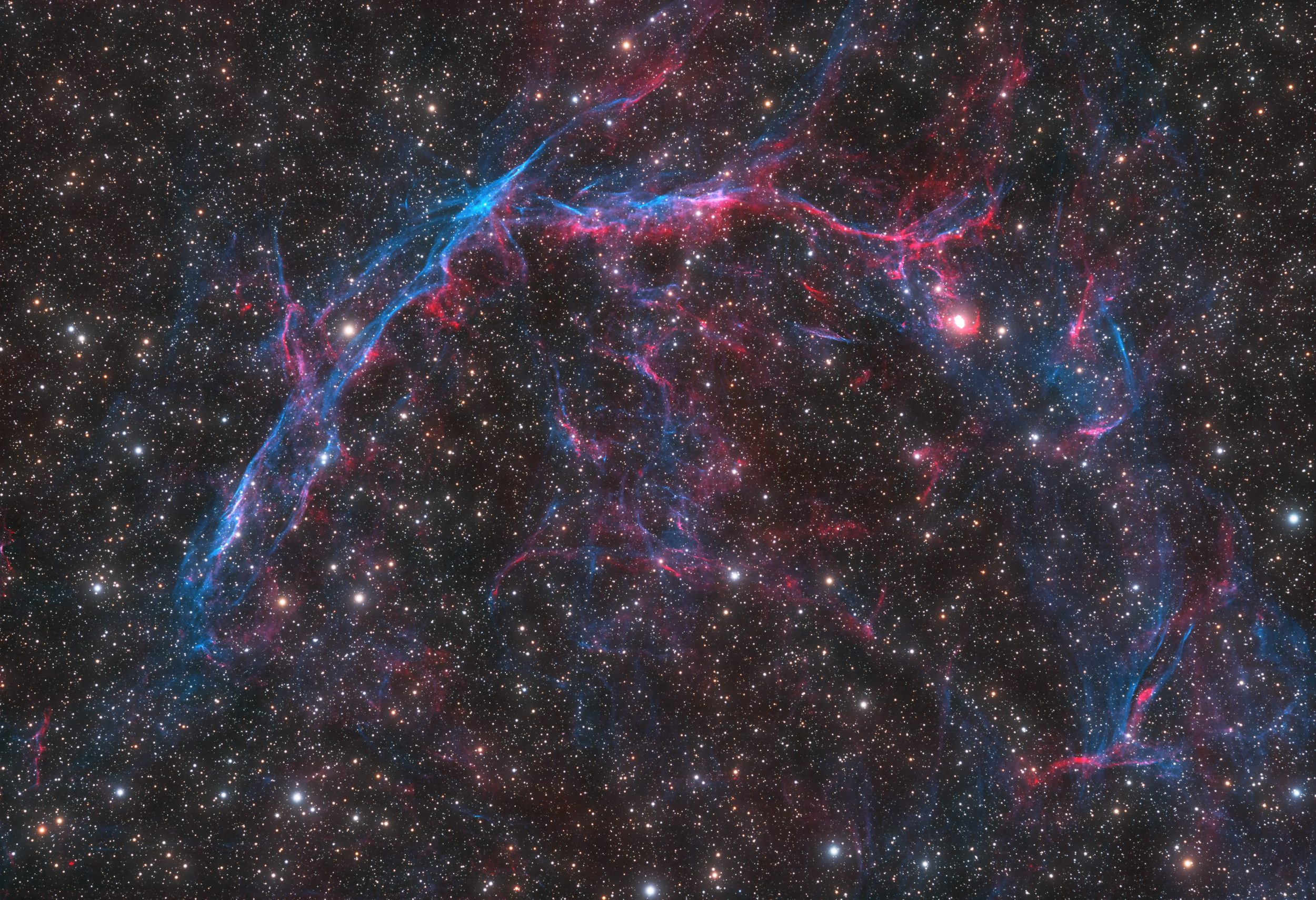
AAPOD2 Image Archives
The Triangulum Galaxy - M33
M33, also known as the Triangulum Galaxy, doesn't have a widely recognized alternative name like some other celestial objects. However, it is occasionally referred to simply by its Messier catalog number, M33. As the third-largest galaxy in our Local Group, after the Milky Way and Andromeda, M33 is a spiral galaxy located in the constellation Triangulum.
It is a popular target for amateur astronomers due to its relatively large size and proximity, making it visible in dark skies with binoculars or a small telescope. The Triangulum Galaxy is a fascinating object of study, providing insights into the dynamics and evolution of spiral galaxies.
Lunar Northern Hemisphere
The northern hemisphere of the Moon is often referred to as the "Lunar Northern Highlands" or simply the "Lunar North." This region is characterized by rugged terrains, highlands, and numerous impact craters. Some notable features within the lunar northern hemisphere include the expansive plains of Mare Frigoris, the prominent craters Plato and Archimedes, and the rugged terrain of the Montes Caucasus and the Montes Alpes mountain ranges. The lunar north provides a diverse and visually compelling landscape for lunar observers and researchers alike.
NGC 891 - THE SILVER SLIVER GALAXY - ANDROMEDA CONSTALLATION
What makes NGC 891 particularly captivating is its orientation, presenting a stunning edge-on view that allows astronomers to study its structure in great detail. The dust lanes within the disk of the galaxy are prominently visible, creating a dark band that bisects the bright stellar background. This feature provides a unique perspective for investigating the distribution of stars, gas, and dust within the galaxy.
NGC 891 is considered a member of the NGC 1023 group, a small galaxy group in the Local Supercluster. Its proximity and orientation make it an excellent target for astrophotography and scientific observation. The study of galaxies like NGC 891 contributes to our understanding of the processes shaping the evolution of spiral galaxies and the vast cosmic structures in which they reside.
The Crescent nebula and its central star WR136
Wolf-Rayet stars are evolved, massive stars that have shed their outer layers, revealing a hot and dense core. WR 136 is no exception, displaying strong stellar winds that propel material into space. These winds create a nebula around the star, contributing to the surrounding interstellar environment.
The binary nature of WR 136 adds another layer of interest. The companion star, which is not a Wolf-Rayet star, orbits the primary star, influencing its evolution and contributing to the dynamics of the system.
The helping hand nebula
This cosmic expanse includes LDN 1355, LDN 1357, LDN 1358, as well as Van den Bergh (VdB) 7 and VdB 9.
LDN 1355, LDN 1357, and LDN 1358 are dark nebulae, consisting of dense interstellar dust that obscures the background starlight. In contrast, VdB 7 and VdB 9 are reflection nebulae. These nebulae do not emit their own light but instead reflect the light of nearby stars, illuminating the surrounding gas and dust.
The presence of these dark and reflection nebulae in the vicinity of the Helping Hand Nebula adds further complexity and beauty to the cosmic landscape, providing astronomers with a rich field for exploration and study of the interstellar medium.
Core Of Orion Nebula
This image offers an intimate view into the core of the Orion Nebula, a stellar nursery located in the sword of the iconic Orion constellation. Captured through Planewave CDK24 and FLI PL 9000 ccd camera, the image reveals a tapestry of luminous gas and dust, illuminated by the energetic radiation of newborn stars. At the heart of this celestial forge, the Trapezium Cluster, a grouping of hot, massive stars, dominates the scene, sculpting the surrounding nebula with their intense stellar winds and radiation. The intricate details captured in this image not only showcase the breathtaking beauty of the Orion Nebula but also provide astronomers with valuable insights into the processes of star formation and the dynamic interplay of young stellar systems.
Solar disk movement
In this dual-image sequence captured through TS 80 ED F/7, Lunt 1.25" Solar wedge, Baader Solar Continuum, Baader UV/IR Cut, used to observe the discernible movement of the solar disk over a span of two days. The first image serves as a celestial timestamp, capturing the solar features at the beginning of this brief period, while the second image, taken 48 hours later, provides a snapshot of the Sun's altered landscape. Notable shifts in sunspot positions and prominence activities become apparent, offering a tangible illustration of the Sun's rotational dynamics. This observational study not only showcases the immediate changes on the solar surface but also presents an opportunity for solar physicists to analyze the Sun's rotational patterns and magnetic field evolution within this concise timeframe
The Sting Ray Nebula
The Sting Ray Nebula, also known as Hen 3-1357, is a young planetary nebula located in the direction of the southern constellation Ara. What makes this celestial wonder particularly intriguing is its unique shape, resembling the graceful wings of a stingray. Formed from the outer layers of a dying star that has shed its material into space, the nebula showcases intricate patterns of ionized gas and dust, illuminated by the central, hot remnant of the star. The Sting Ray Nebula is relatively young on astronomical timescales, providing astronomers with a valuable opportunity to study the early stages of planetary nebula formation. Its captivating structure and youthful appearance make it a compelling subject for amateur astronomers and a source of scientific fascination in the exploration of stellar evolution.
Large Magellanic Cloud - RGB_Ha
In this captivating snapshot of the Large Magellanic Cloud (LMC), one of our Milky Way's neighboring galaxies, we're offered an amateur astronomer's perspective on the cosmic tapestry. The image, featuring a blend of red, green, blue, and hydrogen-alpha filters, unveils the intricate dance of stars and gas clouds within the LMC. Vibrant hues highlight the stellar life cycle, with older stars and dusty regions appearing in reds, and younger, hotter stars in blues and greens. This image provides a unique view of the LMC's celestial wonders, inviting us to appreciate the beauty of our galactic neighbor through the lens of dedicated stargazers.
"Crystal Ball" nebula: AKA NGC1514
NGC 1514, located in the constellation Taurus, is a planetary nebula distinguished by its intricate and captivating structure. Also known as the "Crystal Ball Nebula," it was discovered by William Herschel in 1790. The nebula is formed from the outer layers of a dying star expelled into space, creating a visually striking and complex cosmic display. At the heart of NGC 1514 lies a binary star system, contributing to the nebula's unique morphology. The interplay of ionized nitrogen, hydrogen, and oxygen within the nebula's composition adds to its visual allure, making NGC 1514 a fascinating subject for astronomical observation and study.
Cygnus
This expansive super wide-field image provides a breathtaking view of the Cygnus region, immersing viewers in the cosmic symphony of this celestial expanse. Crafted using luminance (L), red, green, blue (RGB), and hydrogen alpha (Ha) filters, this LRGBHa composition accentuates the diverse and intricate features that define Cygnus. The Veil Nebula, can also be seen (lower left ) a testament to a stellar explosion millennia ago, against the vast backdrop of the Cygnus constellation.
The Ha data enriches the image, unveiling the subtle glow of ionized hydrogen amidst the stellar tapestry. The RGB channels bring to life the natural hues of stars and interstellar dust, creating a vibrant and captivating panorama that extends far beyond the immediate vicinity of the Veil Nebula. The Cygnus region takes center stage, with its prominent stars, dark nebulae, and cosmic clouds weaving together in a harmonious display.
NGC 55 in LHaRGB
Situated in the Sculptor constellation, NGC 55 boasts a rich scientific history, having played a crucial role in advancing our understanding of galactic evolution. Notably, it is one of the nearest galaxies beyond the Local Group, providing astronomers with a unique opportunity to study its features in greater detail. As we explore this galactic masterpiece, NGC 55 emerges not only as a captivating subject for scientific inquiry but also as a key player in the ongoing narrative of cosmic exploration.
Image Title: Perseus Star Cradle
This bi-color image of the California Nebula is produced by combining data from two specific wavelengths: Hydrogen Alpha (Ha) and doubly ionized Oxygen (OIII). The red hues represent areas rich in ionized hydrogen (Ha emissions), indicative of regions with active star formation. The bluish-green tones correspond to OIII emissions, revealing areas with doubly ionized oxygen. This data aids astronomers in studying the nebula's chemical composition, ionization processes, and the influence of massive stars on its structure. The application of Ha and OIII imaging allows for a more detailed understanding of the dynamic astrophysical processes at play within this interstellar cloud located in the Perseus Arm of our Milky Way galaxy.
Horsehead Nebula (HaRGB)
In this HaRGB composite image, the Horsehead Nebula is depicted through a lens that combines data from Hydrogen Alpha, Red, Green, and Blue channels. This scientific rendering unveils essential details of the nebula's structure and composition. The hydrogen alpha emissions, represented in red, provide insight into the regions of ionized hydrogen gas, often associated with areas of intense star formation. Meanwhile, the RGB channels offer a glimpse into the distribution of dust and gas, showcasing the interplay of light and matter in our galactic neighborhood. The Horsehead Nebula, a dark nebula silhouetted against a background of glowing hydrogen, serves as a natural laboratory for studying the intricacies of cosmic evolution and the processes shaping stellar birth and development within our Milky Way.
Conjunction of the Moon and Venus
The crescent Moon delicately partners with the radiant brilliance of Venus, creating a captivating scene against the dark canvas of space. Illuminated by the soft glow of moonlight, this celestial rendezvous not only showcases the celestial bodies' luminous beauty but also highlights the intricate dynamics of their gravitational interplay. Such astronomical phenomena serve as a reminder of the celestial wonders that unfold regularly above, inviting us to marvel at the harmonious dance of celestial neighbors in our night sky.
CTA 1
In the vast canvas of the cosmos, CTa-1 emerges as a captivating stellar composition, inviting us to explore the wonders hidden in the depths of space. This celestial entity, nestled in the astral realms, unfolds its cosmic dance, captivating astronomers and stargazers with its intricate interplay of light and shadow. While the specifics of CTa-1 may elude casual observers, its radiant display serves as a testament to the mesmerizing beauty concealed within the cosmic tapestry. As we peer into the celestial depths, CTa-1 reminds us that the universe, with its countless narratives, continues to unveil its mysteries, offering a glimpse into the poetic allure that adorns the night sky.
Hind's Variable Nebula
Image Description and Details: least photographed object.The Hind Nebula(Herbig-Haro object), prototypical example is the variable star T Tauri, visible as the bright orange star near the image center. The orange star centered in this remarkable telescopic sky view is T Tauri, prototype of the class of T Tauri variable stars. Surrounding T Tauri is a dusty yellow cosmic cloud named the Hind's Variable Nebula (NGC 1555/1554).
Total Exposure: 9Hours 45minutes
Equipment Details: Telescope: Planewave CDK24
Camera: QHY 600M Pro
Filters: Astrodon LRGB
Mount: Mathis MI-1000/1250
Copyright: Credit & Copywrite: Harshwardhan Pathak/Telescope live
The Core of the Lagoon Nebula
Image Description and Details: The Lagoon Nebula is a giant interstellar cloud in the constellation Sagittarius. It is classified as an emission nebula and as an HII region.
It was discovered by Giovanni Hodierna before 1654 and is one of only two star-forming nebulae faintly visible to the eye from mid-northern latitudes. Seen with binoculars, it appears as a distinct cloud-like patch with a definite core. Within the nebula is the open cluster NGC 6530.
- Exposure: 6h55m.
- Acquisition: Image data acquired remotely using the Telescope Live CHI-1 telescope.
- Processing: PixInsight & Adobe Photoshop.
Equipment Details: - Optics: Planewave CDK24.
- Camera: QHY600M CMOS.
- Filters: Astrodon SHO.
Copyright: Credit & Copyright: Chris Willocks / Telescope Live.
Name: Christopher Willocks
Pillars of NGC 7822
Image Description and Details: NGC 7822 is a young star forming complex in the constellation of Cepheus. The complex encompasses the emission region designated Sharpless 171, and the young cluster of stars named Berkeley 59. The complex is believed to be some 800–1000 pc distant with the younger components aged no more than a few million years. The complex also includes one of the hottest stars discovered within 1 kpc of the Sun, namely BD+66 1673, which is an eclipsing binary system consisting of an O5V that exhibits a surface temperature of nearly 45,000 K and a luminosity about 100,000 times that of the Sun. The star is one of the primary sources illuminating the nebula and shaping the complex's famed pillars of creation-type formations
NGC 7635
NGC 7635, also known as the Bubble Nebula, is a striking emission nebula located in the constellation Cassiopeia. This cosmic beauty gets its name from the bubble-like structure created by the stellar wind from the massive, young, and luminous star at its center, SAO 20575. The intense radiation and powerful stellar winds from this central star interact with the surrounding interstellar medium, sculpting the nebula's delicate and intricate features.

